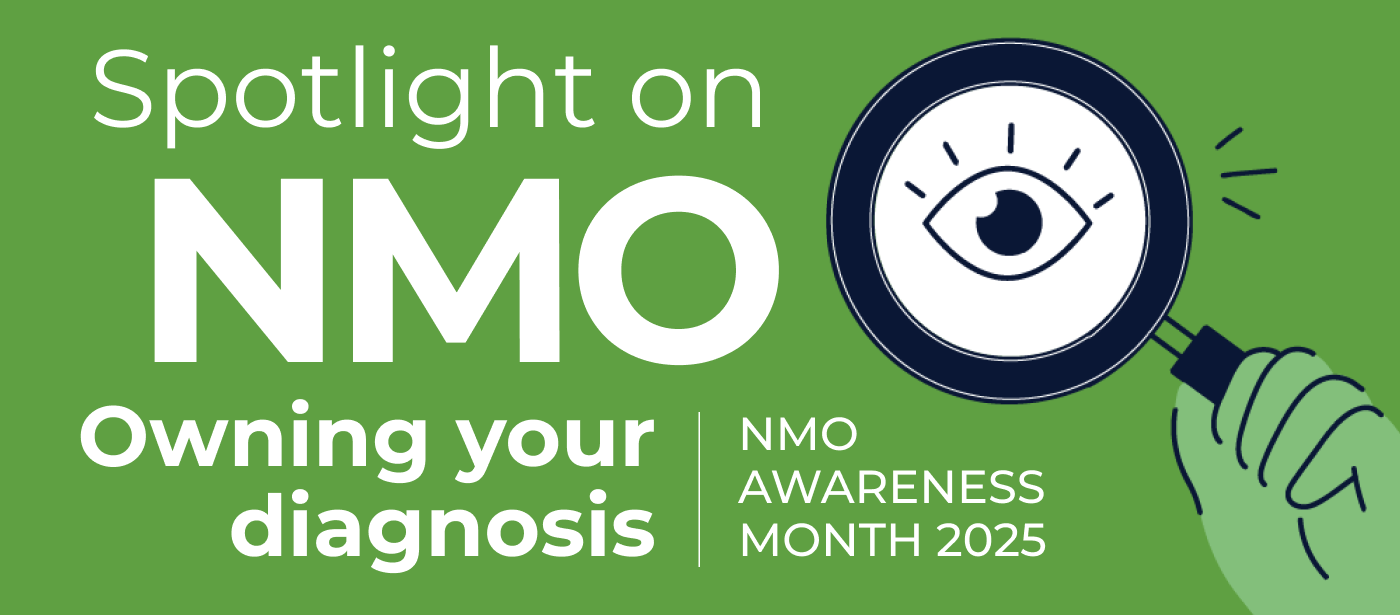How to discuss pain management strategies with your doctor

This is part of a series about neuromyelitis optica for NMO Awareness Month. Go here to read more.
While neuromyelitis optica spectrum disorder (NMOSD) often causes excruciating pain that can greatly affect your quality of life, you may find that your doctor is not taking your pain as seriously as your other symptoms.
To help your doctor better understand how NMOSD pain can make it difficult to get through the day, it’s beneficial to learn how to advocate for yourself.
Prepare to talk about pain
Doing some prep work before your next doctor’s appointment can help you feel more confident and stay focused on what you want to say.
Start by keeping a record of your pain symptoms to bring with you, such as:
- when it occurs
- which body parts are affected
- the intensity of the pain
- how long it lasts
- what it feels like
- what makes it feel better
- any recent changes.
While you shouldn’t have to prove that your pain is a real problem, it may help to do some research on pain and NMOSD.
You may also want to ask for advice about discussing pain with your doctor in a support group or Facebook page.
Manage the conversation
As you walk into the office, remind yourself that you have the right to have your pain taken seriously. During your appointment, insist on pain management being part of your NMOSD treatment plan.
Bring your notes about your pain symptoms and share them with your healthcare provider. Describe in detail how the pain feels: whether it is stabbing, burning, or involves other sensations.
Explain how the issue is affecting your life, such as your work or relationships.
You can also cite research, such as a study on the impact of pain from NMOSD on quality of life, and offer to leave a printout with your doctor.
Unfortunately, women in particular are often not taken seriously when reporting pain to their doctors. Bringing data evidence — such as a sheet tracking your pain symptoms — and explaining the impact of pain may help override potential indifference from a provider.
Next steps
You will probably have to continue to advocate for yourself even after your appointment.
If your doctor has prescribed medication or suggested other ways to treat pain, document how the treatment is working. Bring the notes with you to your next consultation.
If you disagree with your doctor’s pain management strategy or don’t find it effective enough, ask for a second opinion. If you ever feel your doctor isn’t listening to you, you may need to switch to a different one.
You may also want to consider consulting a pain management clinic that specializes in treating pain. Ask your neurologist or primary care doctor for a referral.
Pain management clinics often have access to advanced diagnostic tools that can help to identify the root cause of pain and treat it with a tailored, multidisciplinary approach. For example, many of these facilities work with physicians, physical therapists, and mental health experts who collaborate to create a comprehensive pain management plan. Addressing the physical and psychological aspects of pain can lead to more effective treatment.
Finally, remember that your experiences with pain are valid and should always be handled with respect.
Note: Neuromyelitis News is strictly a news and information website about the disease. It does not provide medical advice, diagnosis, or treatment. This content is not intended to be a substitute for professional medical advice, diagnosis, or treatment. Always seek the advice of your physician or other qualified health providers with any questions you may have regarding a medical condition. Never disregard professional medical advice or delay in seeking it because of something you have read on this website.



